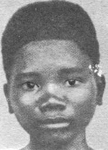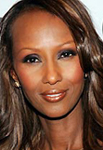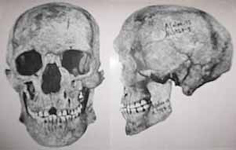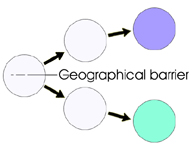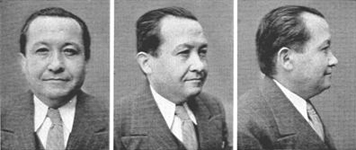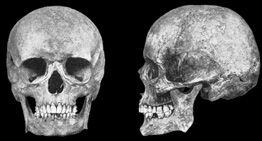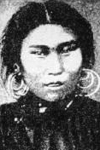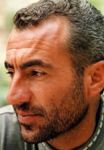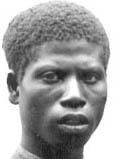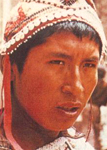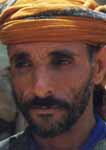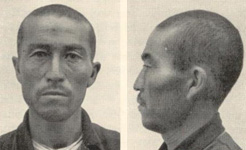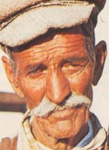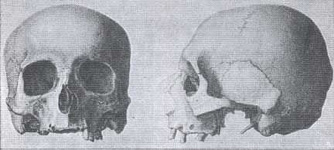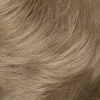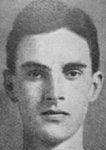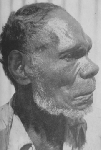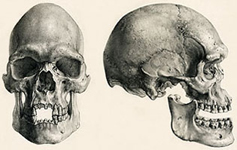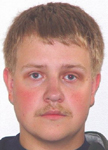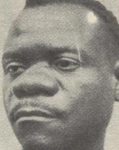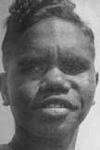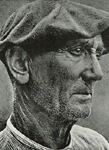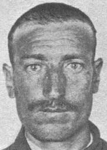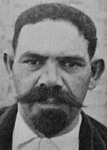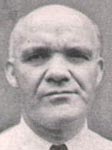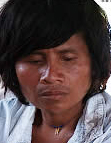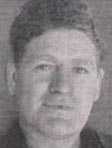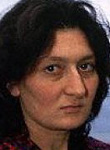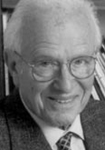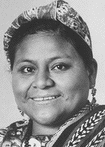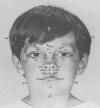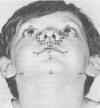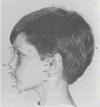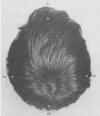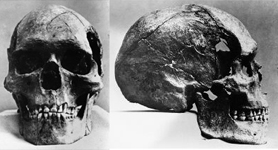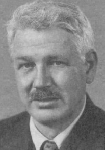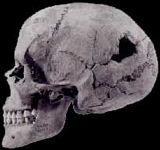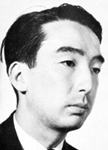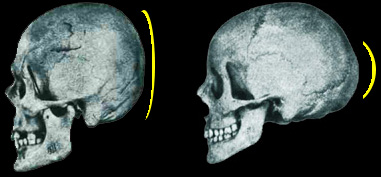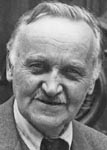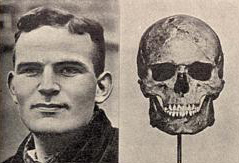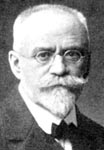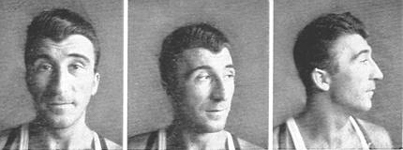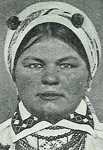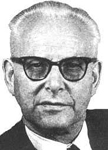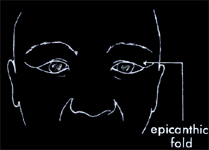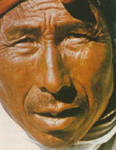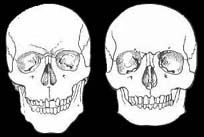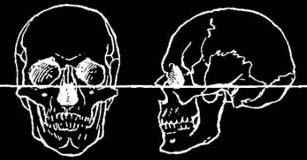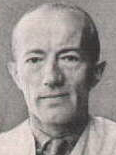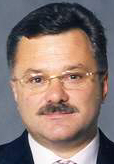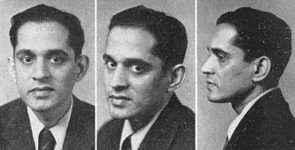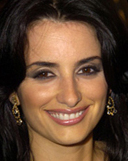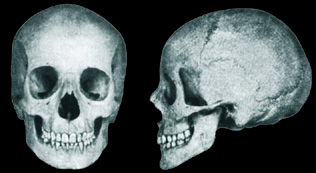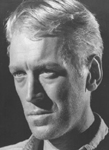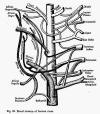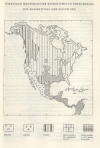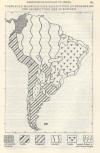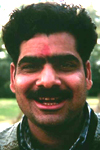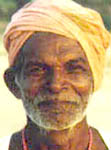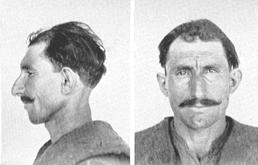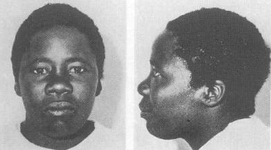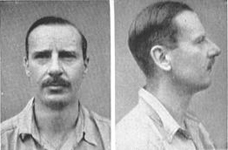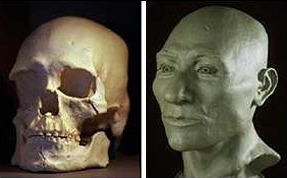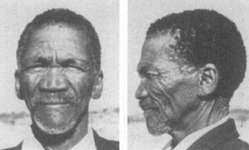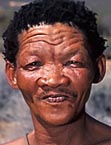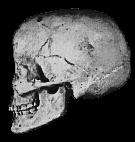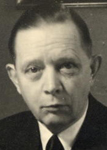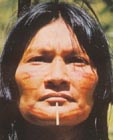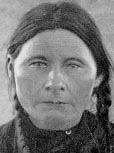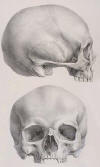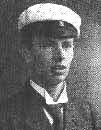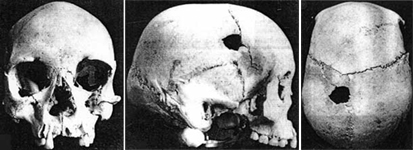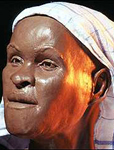|
ACANTHION = subnasale. ACCLIMATIZATION Physiological response to changes in the environment that occurs during an individual's lifetime; such responses may be short-term. The capacity for acclimatization may typify an entire population or species. This capacity is under genetic influence and thus is subject to evolutionary factors such as natural selection. The most commonly occurring dwarf, characterized by short limbs, a large head, a small face with a depressed nose bridge, a normal trunk and squat hands. Cf. ateliotic dwarf. Functional response of organisms or populations to the environment. Adaptation results from evolutionary change (specifically, as a result of natural selection). Trait that enhances survival and reproductive success in a particular environment (an adaptive zone). The evolution of a single stock into a number of different species. A particular type of environment requiring unique adaptations, allowing adaptive radiation to occur. ADRIATIC = Dinarid, in Deniker's typology. AEGYPTID In the typology of Lundman, a variety of East-Mediterranid described as " very closely related to the Saharid, but with a high frequency of blood type gene q."A people of Negritos (members of the Negritid race) indigenous to the Philippines. They are pygmy-sized, with dark chocolate brown skin, tightly curled black hair, very little body hair, flat, hyperplatyrrhine noses, medium-thick lips, and dark brown or black eyes. They are brachycephalic, with mean cephalic indices of 82 (for men) and 86 (for women), and there is little prognathism. The Aeta are similar in most respects to the Semang of the Malay Peninsula and the Andamanese (Andamanid subtype of Negritid) of the Andaman and Nicobar Islands.
Negrid subtype of northeastern Africa. Aethiopids are dolichocephalic, tall and slender, with generally narrow features, highly variable skin color and hair texture. The nose is high and narrow, and not seldom convex, and the chin is often strong. Whether these arguably Europoid features of the Aethiopid physique are the result of significant Europid (Mediterranid, Arabid) influence, or of divergence within the Negrid stock, is a much debated and so far unresolved issue.
AFALOU BOU RUMMEL A series of skulls excavated at Afalou bou Rummel in Algeria. The skulls are robust, and characterized by brachycephaly, broad- and large-headedness, a low, square face, great bigonial breadth, and a general resemblance to European Cro-Magnoids (they are not unlike the semi-alpinized Borreby crania). Afalou bou Rummel is usually referred to merely as Afalou.
AFGHANIAN The prehistoric skeletal type, so named by Coon, which is reflected in the living Iranid type (Coon's Irano-Afghan race). AFRICAN REPLACEMENT HYPOTHESIS AFRICOID = Negrid. AINUID (Ainoid; Kurilid) Special type which constitutes a racial substrate in the Japanese population; it is, or rather was, typified by the Ainu people of Hokkaido, South Sakhalin and the Kurile Islands. Ainuids are small-statured and stocky, with broad faces, wide noses, and notable body hair growth. They are sundadonts, and are not considered Mongolid. Their exact affiliation is the subject of much discussion, but the initial suggestion that they are Europids seems to be contradicted by more recent studies which reveal stronger affiliations with the Polynesids of southeast Asia and Polynesia. Cf. Amurian.
AISTIN (Aisto-Nordid) In Lundman's typology, a tall, high-skulled Nordid type found in Estonia and western Finland. The lateral flaring walls of the nostril (sg. ala). ALAR CURVATURE POINT (ac) The most posterolateral point of the curvature of the base of the nasal alae. ALAR LENGTH (ac-prn) Measured between the alar curvature point and pronasale.ALARE (al) The most lateral point on the alae. ALAR SURFACE LENGTH (ac-prn) Measured between the alar curvature point and pronasale. ALAR THICKNESS ALBINO An individual totally deficient in pigmentation. This condition is known as albinism.ALFÖLDI TYPE
The supposed type of the
originally Turkic-speaking element in the Hungarian population.
Alternate forms of a
gene. Alleles occur at the same locus
on homologous chromosomes and thus govern the same trait. However, because
they are different, their action may result in different expressions of that
trait. The term is often used synonymously with gene.
The biological rule, posited
by Joel Asaph Allen in 1877, which states that endotherms (mammals and
birds) from colder climates usually have shorter
and bulkier
limbs than the equivalent
animals from warmer climates. This
process is directly related to the retention (in cold climates) or loss (in
warm climates) of heat, in that it effects the ratio of body mass to body
surface. Cf. Bergmann's Rule,
borealization. ALLOMETRY The study of the relative growth of a part of an
organism in relation to the growth of the whole.
The “mode” of
speciation by which a population splits
into two (or more) geographically isolated groups, resulting in divergence
and subsequent reproductive
isolation (new biological species).
Cf. peripheral isolate
speciation.
ALPINID (Ostisch ("Eastern", Günther);
West-Alpinid; Western European (Deniker))
Named by Ripley
(Alpine), the Alpinid is an important western and central European
Europid type,
short- to medium-statured, brachycephalic,
characteristically round-headed and -featured, broad-faced, and of intermediate to dark
pigmentation. Alpinids predominate in central parts of France, and are common in southern Germany
(especially Bavaria)
and the Alps. the central European Alpinid is probably derived from
Cro-Magnoids through a
process of alpinization
(cf. Borreby, Gorid).
An evolutionary process or tendency involving
reduction,
brachycephalization and
infantilization, possibly an adaption to a low energy, sedentary
existence. Some alpinized or partially alpinized Europid
populations (Alpinoids), are
Alpinid, Borreby and Gorid.
Any alpinized type, regardless of
affiliation.
Forward projection of the portions of the jaws that hold
the teeth and their roots. Cf. prognathism.
ALVEOLARE (infradentale
superius)
The lowest single point on the bony septum between the upper central incisors.
This can be confused with infradentale, which is the
comparable point between the lower central incisors. It is used to measure
upper facial height.
ALVEOLON (alv)
The point on the hard palate where a line drawn through
the most posterior points of the alveolar ridges crosses the midline.
ALVEON
= prosthion.
AMERICAN TROPICAL RACE
Roughly
equivalent to Centralid, in the typology of
Agassiz.
AMERIND
= Indianid.
AMPHINESIAN RACE
=
Polynesid, in the typology of Huxley.
Tungid subtype
of the lower Amur river, Sakhalin Island, and the Kuril Islands, typified by the
Nivkh (Gilyaks) and related peoples. It is distinguished from other
Tungids (e.g.
Taigid) by its stronger beard growth and appreciable
prognathism. These traits could be
indicative of mixture with Ainuids.
The suggested ANAGENESIS The evolution of one species out of another by succession. ANATOLID (Anadolid) Mostly Armenoid blend with Mediterranid (mainly the old Cappadocid strain) which constitutes the prevalent racial type among the Turks (of Turkey). Anatolids are usually finer-featured, more leptomorphic and somewhat longer-headed than Armenids proper .
ANDAMANID (Mincopies (Huxley))
The
pygmy-sized
Negritid type of the aboriginal inhabitants of the Andaman and
Nicobar Islands, in the Bay of Bengal.
Andamanids are slightly built and
dark-skinned, with tightly curled hair, and are similar in most respects to
the Semang of the Malay Peninsula and
the Aeta of the Philippines, all members of the
Negritid race.
There are several more or less isolated tribes, such as the Onge, the
Jarawa, the Great Andamanese and the Sentineli, which may be distinguished
by certain (very minor) differences. For instance, the Sentineli (of North
Sentinel Island) are slightly taller than the remainder of the group.
Indianid type. Andids are small, stocky
meso-brachycephals
of the Andes (Quechua, Araucanians), the Ecuadorian coast, Peru and Chile. They
are characterized by particularly strong eye-folds (but not particularly
Mongolid eye features), a striking
medium-broad, relatively high-rooted straight or convex nose, smooth hair and
medium brown to brown skin.
ANGLO-SAXON
Special northwestern European type, identified by
Coon, and traditionally associated with
speakers of Western Germanic dialects (Frisians, Angles, Saxons etc.). The basic
form is a
Hallstatt Nordid altered through admixture of
Cro-Magnid and additional
Corded strains. The Anglo-Saxon type
is found today in the British Isles, and is particularly frequent in
southeastern England. It is closely related to the Friterpian variety,
with which it shares recent (Germanic) origins (cf.
Old Germanic Reihengräber
Type). SNPA account
here.
Artificial method of altering the head shape by the
application of bands. Cf. cradling,
positional plagiocephaly.
In front; located on or near the front, or on the
ventral surface of the body.
ANTERIOR HEAD HEIGHT (v-n)
The distance between vertex and
nasion, measured in the midline using double sliding
calipers and a level.
ANTERIOR MANDIBULAR HEIGHT (sto-gn)
The distance between stomion and
gnathion.
The physical-anthropological
discipline concerned with the measurement of the bodily characters of human beings. Cf.
cephalometry,
craniometry.
APEX (ap)
The highest single point on the frontal section defined by left and right
porion with the skull oriented to the
Frankfort Horizontal Plane. The apex
is posterior to bregma.
APICAL ANCESTOR
The ancestor or ancestress
from which descent is traced (the "apex" of the triangle of descendants).
Novel evolutionary trait that is
unique to a particular species and all its
descendants and which can be used as a defining character for a
species or group in phylogenetic terms. Cf.
autapomorphy,
synapomorphy.
The eastern subvariety of
Silvid, prevalent along the North American east coast, especially
Appalachia (e.g. the Mohicans and Delawares). Cf.
Planid.
Southern Orientalid
type, primarily associated with Semitic-speaking populations of the Middle East,
and typified by the Bedouin of Oman. Lundman
distinguished a Syrid subvariety.
According to von
Eickstedt's typology, the Aralid type is a Central Asiatic Turanid
influenced by Tungid. Aralids constitute the principal element among the
Kazakhs, and are common among the Uzbeks and the Uighurs.
ARAN TYPE
An isolated and specialized type, indigenous to the Aran
Islands, off the western Irish coast. It is ancestrally derived from a
largely Keltic Nordid
population. SNPA account here.
SNPA account here.
ARCTIC MONGOLID (Arctic
Race (Agassiz); Arctid;
Borealid)
Mongolid group of
Siberia, the Chukotka-Kamchatka region of extreme northeastern Siberia, and most
of habitable arctic North America and Greenland. Arctic Mongolids are
distinguished a more pyknomorphic and
muscular build, less facial flatness, wider
mandible, lower frequency of epicanthus,
thicker lips, mesognathy, a high and
narrow nose, and very coarse hair. Arctic Mongolids comprise
Eskimids and Sibirids.
ARCTIC
RACE
=
Arctic Mongolid (or merely
Eskimid),
in the typology of Agassiz.
ARCTID
A deposit of fat in the cornea of the eye, which looks gray or blue
and often creates a false impression of partial eye blondism.
ARMENID (Assyroid (Deniker);
vorderasiatischer Typus ("Hither-Asiatic type", Günther))
Mostly brunet,
large-headed Taurid type, first carefully
described by von Luschan (as Armenoid). It resembles the European
Dinarid, with the main exceptions of greater absolute
facial dimensions and a larger nose. Armenids are prevalent among Armenians,
and common throughout the Middle East, where they blend with
Arabids to produce an easily recognizable Middle Eastern phenotype (cf.
Assyrid).
According to Coon, the Armenid (Armenoid, in his typology) type is the
result of dinaricization of
Iranids (Irano-Afghans, in his typology). Cf.
Anatolid, Caucasid.
Near Eastern Taurid
parafamily, pertaining to the
Armenid (relatively unmixed Taurid),
Anatolid
(Mediterranid-mixed
Armenid),
Assyrid and
Caucasid (Dinarid-mixed
Armenid) types.
ARTIFICIAL SELECTION
Selective breeding carried out by humans to alter a
population, e.g. of dogs.
ASCENDING RAMUS
The paired portion of the jawbone which rises from the
gonial region at the back of the tooth-bearing portion of the jaw to the condyle
and coronoid process.
ASH-BLOND (cendré)
A class of hair-blondism in which rufosity is totally absent;
ash-blond hair has a grayish or "platinum" appearance.
ASIATIC ALPINOID
Generic term, denot
ASSORTATIVE MATING
The tendency of like to mate
with like. Mating can be assortative for a certain genotype (e.g.,
individuals with genotype AA tend to mate with other individuals of genotype
AA) or phenotype (e.g., tall individuals mate with other tall individuals). Mostly Armenoid blend with
Arabid, of moderate stature and rather heavy build.
= Armenid, in
Deniker's typology.
ASTERION (ast)
The point at which the sutures between the temporal, the
parietal and the
occipital bones meet.
ATAVISM
The reappearance of a characteristic in an organism after
several generations of absence - a "throwback" - usually caused by the chance
recombination of genes.
A normally proportioned individual of unusually short
stature. Cf. achondroplastic dwarf.
ATHERTON PLATEAU PYGMY
= Barrinean.
ATLANTID (Nordo-Mediterranid)
1) With reference to
partially depigmented northern
Mediterranids, as in
von Eickstedt's 1935 publication
"Die Mediterranen in Wales"; 2) A generic designation, of more recent popular
reference, for the entire range of
Nordid-Atlanto-Mediterranid/Mediterranid
blends, typically
of
dark
ATLANTO-MEDITERRANID (Littoral
European
(Deniker))
Tall, straight-nosed and strongly dolichocephalic
Mediterranid type, the living
equivalent of the skeletal Megalithic type (in the typology of
Coon). It is markedly taller and more
robust
than the Gracile-Mediterranean type, by
which it is outnumbered, and with which it is often mixed. The
Atlanto-Mediterranid type is an important population element in the
Iberian peninsula (prevailing in Catalonia and Valencia), in Italy, and
northward along the western European coast, reaching the British Isles in mixed
form (cf. North-Atlantid).
Coon subsumed all tall-statured
Mediterranids (including
Pontid) in the Atlanto-Mediterranid category.
The superficial ear or ear hole.
Pertaining to the auricle.
AURICULARE (au)
Point on the lateral aspect of the root of the zygomatic process at the
deepest incurvature, wherever it may be.
AURICULAR HEAD HEIGHT (v-po)
Measured with a head spanner. The distance between
bregma and a line connecting the superior borders of the
auditory meatus. The head spanner ideally has a device for orientation in the
Frankfort Horizontal Plane. The two
horizontal pieces fit into the ear openings (porion)
and when the attachment is placed on the left
orbitale, the auricular height is read directly when the calibrated bar is
placed at the apex. If measuring skeletally, it should be
noted that this measurement depends upon the presence of the face to locate the
left orbitale.
Porion-bregma height is similar to
this measurement, and does not require the presence of the face.
General term, referring to Aurignacian contemporaries of
Crô-Magnon characterized by e.g. narrower faces and more ellipsoidal
skulls
than the type(s) exemplified by the latter (Cro-Magnoid).
Combe-Capelle is the primary example, and
Capellid is sometimes used synonymously with
Aurignacid.
Resembling or approaching the Australid
form in certain respects.
AUSTRALID (Homo sapiens australasicus; New Holland Race
(Agassiz))
One of the major subspecies or
races of Homo sapiens; the type of the Australian Aborigines,
including the semi-extinct Tasmanians.
Like the Veddid race of South Asia, the
Australid has retained much of the generalized
Pleistocene sapiens morphology. It is characterized by a long, low and narrow head, a low, broad
and oval face with
a receding forehead, a strongly marked supraorbital region, a rather broad,
typically concave nose springing from a deep nasion depression, and very strong
prognathy. The eyeballs are deep-set, and the lips are thick. The skin ranges
from brown to dark brown. Pilous growth is strong; the hair is usually wavy,
sometimes frizzy, and typically dark brown or black, although lighter, more
reddish tones do occur. The eyes are dark brown.
Subtypes:
Barrinean,
Carpentarian,
A parafamily of dark-skinned Asian and Oceanic racial types, including primarily Australid, Veddid and Melanesid, all of which share a certain retention of generalized Pleistocene features. The exact relationship between these races is not entirely clear, and recent research indicates an a certain extent of diversity in origins, so the present grouping must be considered provisional. AUSTRID
An apomorphy
unique to a single species.
AUTOSOMES
All
chromosomes except the sex chromosomes.
BAIKAL
= Taigid.
[entry pending]
BALANCE MODEL
Hypothesis of genetic variation proposing that balancing
selection maintains large amounts of
genetic variation within populations.
BALDWIN EFFECT
A theory of the American philosopher and psychologist
James Mark Baldwin (1861 - 1934), in which a characteristic, such as individual
learning, significantly affects the evolution of a
particular species with respect to that
characteristic.
Evolutionary process involving
reduction,
infantilization,
brachycephalization and gracilization. Balticization is similar to
alpinization, but does not entail a similar degree
of body reduction, and tends more towards
borealization. Like
alpinization, balticization may result partially from adaption to sedentary farmer
life, but is mostly a response to a colder climate. More specifically, this tendency refers to the historical derivation of
the Baltid types.
BALTID
(Osteuropid (v.
Eickstedt))
Balticized
northeastern European Cro-Magnoid (East-Cro-Magnid). Baltid
(proper) assumes an intermediate position between mostly unreduced, only
slightly
balticized and fully Europid forms (West-Baltids)
and more fully
balticized
and Lappoid-influenced forms (East-Baltids)
in a continuum or cline which, in a broader and rougher sense, delineates the
transition from
Cro-Magnoid
to Lappoid in northeastern Europe. The term may denote
the entire range, and is used interchangeably for mostly un-balticized
West-Baltids
as well as strongly Lappoid-influenced
East-Baltids. SNPA account
here.
BAMBUTID (African Pygmid)
The infantile
Negrid
type of the African Pygmies. The Bambutid type illustrates the
effects of total reduction and partial
infantilization, possibly resulting from adaption to an
unfavourable tropical environment. The average stature is less than 1.5 m, and
the trunk is very long in relation to the legs. The nose is notable for its
excessive width, a feature in which the Bambutid exceeds all other human types.
BANTUID
= Kafrid.
BARRINEAN (Atherton
Plateau Pygmy; Queensland Negrito)
Australid subtype of North
Queensland, distinguished
by its exceptionally small stature, the result of a process of
reduction (probably an in situ
development). Barrineans are often referred to
as "Australian pygmies" and sometimes confused
with Negritids. They are associated by
some with an alleged first wave of
Australian aborigines, predating the
Murrayians and Carpentarians.
BASION (ba)
The point where the anterior margin of the foramen
magnum is intersected by the
median sagittal plane. The point is located on the inner border of the
anterior margin of the foramen magnum directly
opposite of opisthion. In rare cases, the
determination of the position of basion may be made difficult by a thickening of
the anterior margin. In height measurements of the braincase, basion is
positioned somewhat farther onto the underside of the margin of the
foramen magnum (hypobasion), so that the
observer may distinguish between an inferior and a posterior basion for reasons
of convenience and technical demands.
BASION-BREGMA HEIGHT (ba-n)
The distance between basion and
bregma, on the cranium. Place one end of the (spreading)
calipers on
basion, the other on
bregma. If measuring skeletally, and
bregma is depressed (the sutures are much below the
exterior surface of the vault), take the reading from the surface and not in the
depression.
BASION-PORION HEIGHT (ba-po)
Measured with coordinate calipers. Place the ends of the sliding
calipers on the
right and left porion. Move the coordinate
-attachment until it is over basion and read basion-porion
height from calibrated bar when tip of bar is placed on basion.
BASION-PROSTHION LENGTH (ba-pr)
Measured with spreading or sliding calipers.
Composite,
dinariform, mostly Atlanto-Mediterranid
type associated with the Basques.
BATTLE-AXE TYPE
= Corded type.
BAUPLAN
The basic inter-related structural characteristics of a
species.
(1826 - 1911) A British physician and
anthropologist who
published several of the earliest works on the living races, and who established himself
as one of the first authorities on the subject. He was a founder member of the
Ethnological Society, and President of the Anthropological Society (1869 – 70).
BELL BEAKER
A type of Early Bronze Age pottery characteristic of a
culture which is believed to have arisen in Spain, and which had wide
ramifications in western and central Europe.
BELL CURVE (normal probability curve)
A statistical phenomenon; the distribution curve which results under conditions of
random sampling when frequencies of consecutive metrical categories are plotted
in a significant biometric sample.
Cro-Magnoid type of North Africa, usually diluted
by Mediterranid.
The biological rule, posited
by Christian Bergmann (1814 -
1865), which states that within a
species, the body mass increases with
latitude and colder climate. Cf.
Allen's Rule.
BERID (Paleo-Sardinian (Biasutti))
Low-skulled, pyknomorphic
and somewhat reduced Mediterranid-Cro-Magnoid
intermediate type.
A measurement of the width of the shoulders (the acromion is the
projection of the the shoulder blade that forms the point of the shoulder). The
biacromial diameter is measured with the subject seated; the subject’s elbows
are in contact with the body; hands rest on thighs; the examiner stands either
before or behind the subject and measures the most lateral projections of the
biacromial processes.
BIASTERIONIC (ast-ast)
The breadth of the skull on
the chord between the left and right asterion.
An Italian anthropologist.
The maximum distance between the lateral surfaces of the condyles, measured with sliding calipers.
BIGONIAL DIAMETER (go-go) (bigonial
breadth)
The maximum distance between the external gonial angles of the
mandible,
taken both on the dry mandible and on the living.
BIOCULAR WIDTH (ex-ex)
Measured with sliding calipers. Covering tips of the
calipers as in
en-en,
place fixed tip of the calipers above subject's right
exocanthion,
slide movable tip to position above subject's left exocanthion;
use fingers to steady the instrument above the subject's face.
BIODIVERSITY
The totality of genes,
species, and ecosystems in a region or the
world.
BIOLOGICAL SPECIES
= species.
BIOMETRIC
Pertaining to the accurate measurement of living beings.
BIZYGOMATIC DIAMETER
BLACK ASIAN
In popular speech, any member of the various dark-skinned,
non-Mongolid and non-Europid
populations of (East) Asia, including Melanesids,
Negritids and
Veddids. The term is largely useless in the context of racial typology.
BLACK RACE = Negrid, in
Blumenbach's typology.
BLENDING INHERITANCE
The historically influential
but factually erroneous theory that organisms contain a blend of their
parents' hereditary factors and pass that blend on to their offspring.
Compare with Mendelian inheritance. The result of significant
depigmentation of the
skin, hair and eyes. It has been suggested that this feature, which is
possibly the expression of a mutation at
the gene known as MC1R, arose in early (Paleolithic)
northern European populations as a
selective response to relatively
low levels of ultraviolet radiation, resulting in insufficient synthesis of
Vitamin D in the human body (Vitamin D is essential to the strength of the
bone structure). Lighter-pigmented skin supposedly allows more ultraviolet
radiation to enter, enabling an adequate production of Vitamin D. Sexual
selection of novel, distinctive characters such as blond hair and light eyes
(probably non-selected "side effects" of the general reduction in
melanin) may have contributed greatly to
the propagation of the phenotype. Contrary to popular belief, blondism is
not in essence a distinctive or intrinsically
Nordid feature, but is shared by most Europid (mostly
Cro-Magnid)
populations within a certain geographical range centered on the Baltic
Sea (Dalo-Falids, Borrebys,
Baltids, etc.). The lack of similar selection in
Eskimids and other arctic peoples probably results
from adequate levels of Vitamin D in their diets.
BOREALID
Evolutionary adaptation to cold
climates, involving a shortening of the
lower extremities, a lengthening and broadening of the trunk, pyknomorphy,
a shortening and rounding of the head and face, an increase in subcutaneous fat, and
a
levelling or flattening of the facial profile. Cf.
Allen's Rule.
BORREBY
(Nordalpinoid)
Partially alpinized (brachycephalized,
somewhat reduced) and mostly
depigmented
Cro-Magnid type of
northern Europe, common in northern Germany and Scandinavia. SNPA account
here.
The ancestral type of the modern
Khoisanids, from which the latter were derived
through processes of reduction and
infantilization. The type
specimen is the Boskop skull, which was found in 1913 in the Transvaal,
South Africa.
BOSS
Round, broad, bulging eminence on
cranial bones; cf. frontal bosses.
BOTTLENECK
Form of genetic drift that
occurs when a population is drastically
reduced in size. Some genes may be lost from the
gene pool as a result of chance.
Possessing a cephalic index of 80.0 or more
(83.34 or more in the French system);
round-/short-/broad-headed. Brachycephaly is the nominal form, and a
brachycephalic individual is referred to as a brachycephal.
Possessing a cranial index of 80.0 or more;
round-/short-/broad-skulled.
With reference to evolution, a
word coined by G. G. Simpson and pertaining to a slow,
gradualistic rate of morphologic change over time, not unlike that
envisioned by Darwin. Cf. horotely,
tachytely.
Indianid type. Small, stocky
mesocephals of the jungles around the
Amazonian basin, including the adjacent highlands, along the Brazilian coast, in
Venezuela, Guyana and the West Indies. Brazilids are characterized by relatively
steep, broad foreheads, oval faces, soft features, mostly narrow eyelid slits,
but not particularly Mongolid eye features,
medium-broad to broad high-rooted nose, smooth or slightly wavy hair and
yellowish light brown to brown skin.
maximum head height
* 100
Martin (1928) gives Broca's divisions as:
(on the cranium)
B.H.I. - 91.99 =
tapeinocranial (low-skulled)
BREGMA (b)
The point where the sagittal and coronal sutures meet. In those cases where the
most anterior segment of the sagittal suture deflects to one side, the point of
the junction of the two sutures must be projected. Bregma is impossible to
determine exactly on children’s crania with open fontanelles,
skulls with
"Fontanelle" bones, and in skulls with total obliteration of the sutures. In the
latter case it may be possible to see existing traces of the sutures by slightly
moistening the area. In case of the presence of a "Fontanelle" bone, a straight
extension of the sagittal suture is drawn across the forehead while a similar
connection is drawn between the two sections of the coronal suture. Bregma is
positioned at the point of intersection of these two imaginary lines or
extensions.
Prominence of the frontal area immediately above the
orbits and
nasal root, and, on the living, underlying the eyebrows.
In the works of
Carleton
S. Coon, and in the
present context, Brünn refers to an unreduced and mostly
depigmented northwestern
European Upper Palaeolithic survivor of Cro-Magnid
type, common in western Ireland, and similar to the
Dalo-Falid type. The designation is
problematic, however, as the skeletal remains unearthed at Brünn/Brno (Czech
Rep.) belong to the Aurignacid/Capellid
tradition, and not that of Crô-Magnon. SNPA account here.
(? - ?) A Norwegian
anthropologist who conducted numerous studies on
the racial composition of the Norwegian population. In the early 1920's, he
collaborated closely with K. E. and
Alette Schreiner, but their
connections soon deteriorated as a result of Bryn's increasing Nordicism, and he
was left to his own work, which was meanwhile gaining a measure of popularity in
Germany. Bryn soon formed a relationship with
Günther and his wife, who were
living in Norway at the time.
(1891 - 1979) A Russian
anthropologist who conducted thorough studies of
the Russian population, and who developed particular methods in the fields of
ethnography and physical anthropology.
In Coon's typology,
a brachycephalic
Mongolid type with extreme
Mongolid features.
Subvariety of Margid (an
Indianid type), in Lundman's
typology.
The standard instruments for collecting anthropological measurements.
CALOTTE
The bones of the cranial
vault, the calvaria without the
cranial base.
The brain case.
The angle at either end of the fissure between the
eyelids.
CAPE OF GOOD
HOPE RACE
=
Khoisanid, in the typology of Agassiz.
Any type or individual recalling Combe-Capelle.
Sometimes used synonymously with Aurignacid.
= Khoisanid.
A
Mediterranid variety, prevalent in Asia
Minor and adjacent areas in prehistoric times; nowadays it has largely blended
with Armenoids (this blend is known as
Anatolid).
Australid subtype of northern and central Australia, comparatively tall, straight-haired and dark skinned, with very little body hair. Similarities to the Veddids of India have been considered. The Carpentarians are associated by some with an alleged third wave of Australian aborigines, following that of the Murrayians. CARRYING CAPACITY The maximum number of individuals of a particular species that a given part of the environment can maintain indefinitely. CASPID = East-Mediterranid, as applied by e.g. Lundman to a large number of dolichocephalic brunet types, including Pontid and Indid. CAUCASIAN = Europid, in Blumenbach's typology; present popular usage, along with Caucasoid. CAUCASID (Mtebid (Lundman)) Tall-statured Taurid indigenous to the northern Caucasus and adjacent regions, possibly initially a Dinarid-Armenoid intermediate. Caucasids are typical of the Georgian population, and the type is common among the Chechens, Ingushes, and Ossetians. A good example of the process of dinaricization, Caucasid features are probably a result of adaptation to life in mountainous regions. Not to be confused with Caucasian/Caucasoid.
CAUCASOID = Europid; present popular usage, along with Caucasian. CAUDAL In quadrapeds, the tail end (cf. inferior). (1922 -) Italian population geneticist, one of the most influential scholars of his field in the 20th Century. Cavalli-Sforza’s research in genetic clustering within human populations has incited his official conclusion that strict racial classification is “futile”.
CENTRAL ASIAN INTERSTREAM TYPE = Pamirid, in the typologies of several Russian anthropologists. CENTRALID (American Tropical Race (Agassiz, roughly equivalent); Istmid (Lundman ); Zentralid (in German))Indianid type. Medium to small, stocky and infantile brachycephals native to the areas between the southern coast of the USA and New Mexico and Arizona (Pueblo, Hopi etc.), eastern and southern Mexico (Maya and Aztec ancestry), Central America and western Colombia. Centralids are characterized by relatively steep but narrow foreheads, rectangular faces, relatively gracile features, sparsity of Mongoloid eye features, medium broad to broad, striking straight or slightly convex noses, smooth or slightly wavy hair and medium brown skin. The type is geographically highly variable, and Biasutti proposed two further subtypes, the southern, hyperbrachycephalic Istmid and the northern, less brachycephalic Pueblid.
Pertaining to the head (= Gk. kephalē).
maximum head breadth
* 100 According to the Frankfort Agreement of 1882 (incl. the amendment of the international agreement of 1883):
C.I. 55.0 - 59.9 = ultradolichocephalic (extremely long-/narrow-headed) C.I. 75.0 - 79.9 = mesocephalic (intermediate in head form) C.I. 80.0 - = brachycephalic (round-/short-/broad-headed) C.I. 85.0 - 89.9 = hyperbrachycephalic (very round-/short-/broad-headed) C.I. 90.0 - 94.9 = ultrabrachycephalic (extremely round-/short-/broad-headed) According to the French system:
C.I.
- 75.00 = dolichocephalic
Devised by Retzius, the cephalic index
has played an important part in traditional racial studies. Today
it is less
relied upon for purposes of classification, but its application in a synchronic
context is still useful enough for it to be considered valuable. Cf.
cranial index.
A measure of absolute head size (cf.
cranial module):
maximum head length +
maximum head breadth +
maximum head height
The measurement of the cephalic characters of living
humans. Cf. craniometry,
anthropometry.
CEVENNINE
A term suggested by
Lundman, apparently indicating all
(western?) European
Alpinoid varieties,
including Alpinid and
Strandid.
Possessing a length-height index of less than 70; low-headed. Chamaecephaly is
the nominal form, and an chamaecephalic individual is referred to as a
chamaecephal.
Possessing an orbital index of 82.9 and less;
low-orbitted.
Possessing a nasal index of 51.0 and over on the skull;
relatively wide-nosed.
A male skeleton found in the Raymonden cave, near Chancelade in Dordogne,
France, in 1888, dating from ~15,000 BC, and associated with the Magdalenian. At
155 cm, It is rather small (yet robust) as compared to
Crô-Magnon and Předmost. The
skull
is
dolicho- and hypsicranial,
large- and high-faced, with a steep forehead and a rounded but steep
occipital region, the latter of which is
unusual for modern dolichocephals. In life, the
nose of Chancelade was highly rooted, beak-like, and very thin. A resemblance to
Eskimid or other Mongolid/Mongoloid
types has been noted (Carleton Coon called
it "incipiently Mongoloid"), but a close connection is unlikely, on account of the
prominent chin and lack of flaring gonial angles.
CHEILION (ch)
The outer corner of the mouth where the outer edges of the upper and lower
vermilions meet.
CHERKESS TYPE
= Pontid, in
the typologies of several Russian anthropologists.
CHIGNON CHIN HEIGHT (sl-gn)
The distance between
sublabiale and
gnathion. CHIN INCLINATION (sl-pg)
The distance between sublabiale and
pogonion.
North-Sinid subtype of Korea,
distinguished from the Khitaid subtype by a higher
cephalic index, larger face, wider nose,
and thicker lips. Strands of
DNA that are found in the nucleus
of each of the body's cells. CLADISTICS Approach to
classification that seeks to make rigorous
evolutionary
interpretations
based solely on analysis of certain types of homologous (i.e.
derived) characters. CLADOGENESIS Evolution
by branching. CLADOGRAM A chart
showing evolutionary relationships as determined by cladistic analysis. It
is based solely on interpretation of shared
derived
characters. No time
component is indicated, and ancestor-descendant relationships are not
inferred.
Taxonomic category ranking
above order and below
phylum.
Gradual change in frequency
of genotypes and
phenotypes over geographical space, usually related to a corresponding
environmental change. COLUMELLA APEX (c') The most anterior, or the highest point on the columella
crest at the apex of the nostril.
COLUMELLA HEIGHT (sn-c')
The distance between subnasale and
columella apex. COLUMELLA WIDTH = nose width. Skeletal remains found near
Montferrand in Perigord, France, in 1909, dating from ~40.000 B.P., and
characterized by low to medium stature, a pentagonal-ellipsoid
skull,
leptoprosopy, arched
superciliaries, low
orbits,
prognathism and a wide nasal
index. Combe-Capelle is often contrasted with
Crô-Magnon, the two exemplars being attributed to basic tendencies within
the Europid group.
CONDYLION LATERALE (cdl) The most lateral point on the mandibular condyles. CONGOID = Negrid,
in the typology of Coon.
Member of the same
species.
CONVERGENT EVOLUTION ((evolutionary)
convergence)
The
evolution of
species
from different
taxonomic
groups toward a similar form; the development of similar characteristics by
taxonomically different organisms.
Cf. homoplasy,
parallelism.
SNPA account here.
The biological rule, posited
by Edward Drinker Cope (1840 -
1897), which states
that CORDED TYPE (Battle-Axe type) A tall, leptomorphic, dolichocephalic, long-faced and high-headed type originally affiliated with the western Eurasian steppes. The Corded type is characterized by a linear but muscular build; its browridges and muscular markings are medium to strong, the mandible is deep and the chin is marked, but narrow through the gonial angles. The nose is leptorrhine and often prominent. Its name derives from its association with the Corded Ware culture; it was the principal type of the Battle-Axe and Boat-Axe populations in the north. In connection with the Nordid types, Corded influence is of the essence, and individuals of Nordid derivation, especially East-Nordids and Trønders, often completely recapitulate the original Corded type. The ultimate origin of the Corded type is uncertain. It has been theorized that this type is at least partially associated with the propagation of Y-chromosome haplogroup R1a, which is found at significant frequencies along a northwestern-southeastern continuum running between the extremes of the Scandinavian Peninsula and the Subcontinent. Accordingly, tribes of predominantly Corded type have been credited with the propagation of Indo-European languages throughout western Eurasia.
CORMIC INDEX CORONAL PLANE COSHU TYPE (Cosiu type (Saller); Jakunin type) Mostly North-Sinid blend with Paleo-Mongolid and Ainuid admixture, local to Japan and Korea. It is distinguished by a narrower face and nose (which is often convex), a higher forehead and lower frequency of epicanthus, than the neighboring Sinid populations.
The practice, e.g. among North American Indians, of carrying infants attached to a cradle board, resulting in occipital flattening. Cf. annular constriction, positional plagiocephaly. CRANIAL (superior) Above or near the head. CRANIAL BASE LENGTH (ba-n) Measured from basion to nasion using spreading calipers. CRANIAL BASE WIDTH (t-t) Measured with sliding calipers. The tragi are soft tissue landmarks; tips of the calipers should gently touch the superior margins of tragi. CRANIAL CAPACITY The volume displaced by the brain within a cranium. A simple measure of brain size, but not necessarily of intelligence.
maximum cranial lenght
* 100
Cf. cephalic index. A measure of absolute cranial size (cf. cephalic module):
maximum
cranial length +
maximum
cranial breadth +
maximum
cranial height The measurement of the cranial characters of human remains. Cf. cephalometry, anthropometry.
The face and the calvarium. Cf. skull.
CRISTA PHILTRE (cph)
A point on each crest of the philtrum. Europid types descended from the robust, dolichocephalic and broad-faced population exemplified by Crô-Magnon, continuing the classic type of the hunter-gatherers of the temperate-cold/cold regions. Cro-Magnids proper (as exemplified by Dalo-Falids and "Brünns") are unreduced, somewhat gracilized and have narrower faces than their Upper Paleolithic ancestors. Other populations have experienced deviant evolutionary processes, leading to specializations like reduction and brachycephalization (Borreby, Alpinid and Baltid). Sporadic survivals of an eastern "pre-balticized" Cro-Magnid, similar to the western forms, may be found throughout predominantly Baltid populations. Similar and/or related to Cro-Magnid (or Crô-Magnon). The first five skeletons of this kind were discovered in 1868 near les Eyzies-de-Tayac, with the definitive specimen from this excavation being known as Crô-Magnon I. The remains are assumed to date from ~25,000 BC. In life, this man was probably about 170 cm tall, and quite robustly built. The skull is quite large, dolichocranial, with a pentagonal outline in vertical view. The parietal bones bulge outward to the sides. The forehead is straight, the browridges slightly projecting, the cranial vault is noticeably flattened, and the occipital bone projects backward. Despite the long, narrow shape of the skull, the face appears rather short and wide. The maxillae are to some extent projecting. The orbits are low-set, wide, and square-shape. The nasal aperture of the skull is narrow, and strongly projecting. The mandible is robust, with massive ascending ramus, strongly developed points of muscular attachment, and a quite prominent chin. CRURAL INDEX
tibia
length* 100 Possessing a curved occiput; the opposite of planoccipital.
CUTANEOUS LOWER LIP HEIGHT (li-sl) The distance between labiale inferius and sublabiale. (1882 - 1965) A Polish anthropologist, statistician and linguist, who, in the course of his studies of African populations, developed various statistical methods and contributed to the field of taxonomy. He also made certain important contributions to Indo-European comparative linguistics. Here (legend) is an outline of his general racial typology.
DACRYON (d) The point on the medial border of the orbit at which the frontal, lacrimal, and maxilla intersect. In other words, dacryon lies at the intersection of the lacrimomaxillary suture and the frontal bone. There is often a small foramen at this point. DALISCH = Dalo-Falid, in Paudler's typology. DALO-FALID (Dalisch (Paudler); Dalofaelid; Dalo-Nordic (von Eickstedt); Faelid (Lundman); Fälisch (Günther); Phalian/Phalid) Unreduced and depigmented northern European Upper Paleolithic survivor of Cro-Magnid type, similar to the Irish "Brünn". The Dalo-Falid type is prevalent in northern Germany, and constitutes an important element in southern Scandinavia (incl. Lundman's Västmanland type). Certain scholars have considered it within the context of a "general Nordid" category (cf. Nordish). SNPA account here.
DALO-NORDIC = Dalo-Falid, in von Eickstedt's and Paudler's typologies. In Coon's typology, a small mesorrhine or chamaerrhine Mediterranean racial type, which supposedly participated in the formation of the Nordid variety/varieties through combination with the Corded type.(1809 – 1882) A British naturalist who achieved lasting fame by convincing the scientific community of the occurrence of evolution and proposing the theory that this could be explained through natural and sexual selection. This theory is now considered the central explanatory paradigm in biology.
The theoretical approach to
biological evolution first presented by
Charles
Darwin and Alfred Russel Wallace in 1858. The central concept of the theory
is natural selection, referring
to the greater probability of survival and reproduction of those individuals
of a
species
having
adaptive characteristics for a given environment.
DAYAKID
DEME
Local population of a
species; the community of potentially
interbreeding individuals at a given locality; a
population or race sampled over time.
DEMOGRAPHY
The analysis of the size,
composition, and rate of change of a
population.
DENDROGRAM
A branching, or tree-like,
diagram.
Populations
on closer branches
are more closely related to each other than are
populations
on distant branches.
(1852 - 1918) A French naturalist/anthropologist, the first
to evolve the notion of a "Nordic race" (la race nordique). Deniker's
racial typology for Europe assumed ten types ("ethnic groups"), six primary and
four secondary. Here
is an outline of his general racial typology.
DEOXYRIBONUCLEIC ACID
(DNA)
The double-stranded molecule
that contains the genetic code. Reduction of the dark pigment (melanin)
in the skin, hair, and/or eyes, the ultimate result of which is
blondism.
DERIVED (homologous) Pertaining DESCENT WITH MODIFICATION Phrase used by Charles Darwin with reference to the process by which natural selection favors some variations resulting in their becoming more common in the next generation. Descent with modification is another way of describing evolution. Nesid subtype (Nesid “proper”), with broader and more pronounced Mongolid features than Proto-Malayid. DEVELOPMENTAL ADJUSTMENT Change in the normal growth patterns and development of an individual that occurs in childhood as a result of specific cultural practices (e.g. foot binding) or other environmental processes. The anatomical and physiological changes that result are mostly irreversible by adulthood. Also referred to as developmental acclimatization. Scattering, migration in many directions, applied specifically to historical Jewish movements. DINARID (Adriatic (Deniker); Epirotic) Central and southeastern Europid, named with reference to the Dinaric Alps. The Dinarid is considered a Taurid, being a product of the dinaricization of an ancestral population of uncertain affiliation (a Borreby-like Cro-Magnoid type has been suggested). Dinarids are typically brachycephalic and planoccipital, long-faced and long- and convex-nosed, and intermediate to dark in pigmentation. They are most common in the Balkans, especially in the region of former Yugoslavia, and a Dinarid "belt" extends from France through southern Germany, the Alps and northern Italy, terminating in the western shoreline populations of the Black Sea. Cf. Norid.
An evolutionary process involving brachycephalization, flattening of the occipital region, and development of a long and prominent nasal apparatus, typically of extreme convexity. Dinaricization, whatever its precise nature, could be an adaptation to life in mountainous regions, and is allegedly correlated with herding populations. The Eurasian Taurid types (including the European Dinarid) are classic examples of dinaricization, but a tendency may also be observed outside of the Europid group, e.g. in certain Indianid populations. Based on observations made by the budding physical anthropologist Byron O. Hughes in his doctor's thesis (The Physical Anthropology of Native Born Armenians), Coon explained the special set of features as the divergent outcome of interbreeding between Alpinid and Mediterranid populations of certain proportions (2/3 Mediterranid, 1/3 Alpinid; see The Races of Europe, Photographic Supplement, plate 35). It has also been suggested that brachycephalized Cro-Magnoids and/or similar strains have been involved in the various formations. Resembling or approaching the Dinarid form in certain respects. Having features similar to Dinarids or Taurids. Selection for or against one extreme of a trait. In the case of polygenic traits that are expressed as a continuum of phenotypes, such as stature, it would be selection for people who are either very tall or very short. The result would be a progressive increase in the form of the trait that is being selected for and a reduction in the form that is being selected against. In the case of a trait controlled by only two alleles, it would be selection against one of the alleles. Cf. disruptive selection, stabilizing selection. Selection for both extremes of a trait and against the middle. In the case of polygenic traits that are expressed as a continuum of phenotypes, such as stature, it would be selection for both very tall and very short people and against those who are average in height. The result would be a progressive increase in both of the extreme forms of this trait and a reduction in the middle range. In the case of a trait controlled by only two alleles, it would be selection for both recesssive and dominant homozygotes and against heterozygotes. The result would be a progressive reduction in the number of people who are heterozygous for the trait in the population. Cf. directional selection, stabilizing selection. DISTAL Away from the center. DNA Possessing a cephalic index of 74.9 or less (75.00 or less in the French system); long-/narrow-headed. Dolichocephaly is the nominal form, and a dolichocephalic individual is referred to as a dolichocephal. Possessing a cranial index of 74.9 or less; long-/narrow-skulled. DOLLO'S LAW The hypothesis, posited in 1890 by the palaeontologist Louis Dollo (1857 - 1931), which states that evolution is non-reversible (i.e., structures or functions discarded during the course of evolution do not reappear in a given line of organisms). The ability of a given genetic trait or character to assert itself over a so-called recessive trait or character. DORSAL (posterior) The back side of the body. DRAVIDIAN = Veddid and/or Indo-Melanid, in the typology of Deniker and others. E EAR INCLINATION (sa-sba) Measured between super- and subaurale. EAR INSERTION (obs-obi) Measured between the otobasia (inferius and superius). EAR LENGTH (sa-sba) The distance between superaurale and subaurale. EAR WIDTH (pra-pra) The distance between the preaurales. EAST-ALPINID = Gorid. EAST-BALTID (Homo arcticus fennicus (Sergi)) Northeastern European composite type, resulting from the influx and subsequent stabilization of Lappoid elements in a Baltid population. It represents one end of a "continuum", opposite to West-Baltid. SNPA account here.
The Cro-Magnid type, cognate with Dalo-Falid ("West-Cro-Magnid"), that lies at the back of the modern Baltid types. Single instances reflecting the original "un-balticized" type may be found in predominantly Baltid populations, but they are individual manifestarions of a substrate, and nowhere does the type form a population in its own right. West-Baltid refers to a slightly altered (balticized) East-Cro-Magnid, which forms a greater population element. EASTERN AMERICAN TEMPERATE RACE Roughly equivalent to Silvid, in the typology of Agassiz. Refers to the Mediterranid varieties, including Pontid, which are indigenous to the eastern Mediterranean areas. The term has also been applied to a larger selection of eastern European and Central Asian brunet dolichocephalic types, including Orientalids. Coined by Lundman; eastern European Nordid, characterized by a dominant Corded element. SNPA account here.
EAST-SIBIRID (Paleo-Siberian) Arctic Mongolid variety, distinguished by greater facial profile, wider lower jaw, lower frequency of epicanthus, thicker lips, mesognathy, very coarse hair, high-rooted and narrow nose, very pyknic and massive body build, very advanced musculature, and distinguished especially by white skin. East-Sibirids are found in Chukotka-Kamchatka. Cf. Sibirid, West-Sibirid.
Eastern variety of Veddid, relative to the "western" varieties of the Indian Subcontinent.
Transition area between two adjacent ecological communities; ecotones tend to display a greater than usual diversity of species. ECTOCONCHION (ec) The intersection of the most anterior surface of the lateral border of the orbit and a line bisecting the orbit along its long axis. To mark ectoconchion, move a toothpick or other thin straight instrument up and down, keeping it parallel to the superior orbital border, until you divide the eye orbit into two equal halves. Mark the point on the anterior orbital margin with a pencil. ECTOMOLARE (ecm) The most lateral point on the outer surface of the alveolar margins, usually opposite the middle of the upper second molar tooth. VON EICKSTEDT, EGON (FREIHERR) (1892 - 1965) German anthropologist and ethnographer of considerable influence and legacy. Follow this link for von Eickstedt's racial map of Europe.
ENDEMIC Characteristic of, or native or restricted to, a particular population or locality. The single point at the posterior margin of the anterior border of the foramen magnum. It is usually internal to basion. It is used for facial measurements, not cranial height.
ENDOCANTHION (en)
The inner corner of the eye fissure where the eyelids meet, not the
caruncles (the red eminences at the medial angles of the eyes). The custom by which members of a group marry exclusively within the group; the opposite of exogamy. ENDOMOLARE (enm) The most medial point on the inner surface of the alveolar ridge opposite the middle of the second upper molar tooth. ENDOMORPHIC = pyknic, in the somatotypology of Sheldon. EPICANTHIC FOLD (epicanthus; palpebronasal fold; plica palpebronasalis) Skin fold of the upper eyelid (from the nose to the inner side of the eyebrow) covering the inner corner (medial canthus) of the human eye. This fold covers and appears to lower the inner corners of the eyes, creating the appearance of "slanted eyes." It is commonly known amongst Asians as "single-eyelids", as opposed to "double eyelids". Epicanthus is primarily associated with the Mongolid and Khoisanid subspecies.
EPIROTIC = Dinarid. Arctic Mongolid variety distinguished by greater facial profile, wider lower jaw, lower frequency of epicanthus, thicker lips, mesognathy, very coarse hair, high-rooted and narrow nose, a rather pyknic and massive body build, advanced musculature, and darker skin. Eskimids are found in arctic North America, Greenland, and intermittently in coastal Chukotka-Kamchatka.
ETHIOPIAN = Negrid (probably including Khoisanid), in Blumenbach's typology. Seivelike spongy bone located in the anterior part of the floor of the cranium between the orbits; the ethmoid is the principal supporting st ructure of the nasal cavity.ETHNIC GROUP Group of people within a larger social and cultural unit who identify themselves as a culturally and historically distinct entity, separate from the rest of that society. EUGENICS The philosophy of “race improvement” through forced sterilization of members of some groups and encouraged reproduction among others. In Sergi's typology, all dolichocephalic Europid types; the opposite of Eurasiatic. In Sergi's typology, all brachycephalic Europid types; the opposite of Eurafrican. EUROPEAN TEMPERATE RACE = Europid, in the typology of Agassiz. EUROPID (Caucasian or White race (Blumenbach); Caucasoid; European Temperate Race (Agassiz); Homo sapiens albus) One of the major subspecies or races of Homo sapiens, indigenous to western Eurasia and North Africa. The most important subvarieties or evolutionary tendencies are Cro-Magnoid (including Alpinoid), Indid, Mediterranid, Nordid, Orientalid and Taurid. Resembling or approaching Europid. EURYENE (euryonic) Possessing an upper facial index of 45.0 - 49.9; short-/broad-upper-faced. EURYON (eu) The most laterally positioned point on the side of the braincase. Euryon always falls on either the parietal bone or on the upper portion of the temporal bone and may be determined only by measuring maximum cranial breadth. The area of the root of the zygomatic arch, the supramastoid crest, and the entire adjacent region above the external auditory meatus, which sometimes exhibit excessive symmetrical lateral expansion, should be avoided when determining the position of euryon. Possessing a facial index of 80.0 - 89.9; short-/broad-faced. A change in the frequency of alleles from one generation to the next. EXOCANTHION (ex) The outer corner of the eye fissure where the eyelids meet. The custom by which members of a group regularly marry outside the group; the opposite of endogamy. EXOSTOSIS A bony excrescence. A conventional or standard level at which the skull is placed for craniometric study, with the lower border of the left orbit on the same horizontal plane as the upper borders of the two ear holes. EYE FISSURE HEIGHT (ps-pi) The distance between palpebrale superius and palpebrale inferius. EYE FISSURE INCLINATION (en-ex) (orbital inclination) Measured between endo- and exocanthion. EYE FISSURE LENGTH (en-ex) The distance between endo- and exocanthion.
F1 GENERATION The first offspring (or filial) generation. The next and subsequent generations are referred to as f2, f3, etc. FACIAL INDEX (F.I.) (total facial index)
morphological face height
* 100 According to Martin:
F.I. - 79.9 = hypereuryprosopic
(very short-/broad-faced) A F.I. of 84.0 - 87.9 is often called mesoprosopic (moderate in facial form).
FÄLISCH = Dalo-Falid, in Günther's typology. Taxonomic category of related organisms ranking below order and above genus. A family usually consists of several genera. FEHMARNER TYPE A special Borreby phenotype, associated with the German island of Fehmarn. A hypothetical eastern Nordid type, in von Eickstedt's typology. Pertaining to natural selection, a measure of relative reproductive success of individuals. Fitness can be measured by an individual's genetic contribution to the next generation compared to that of other individuals. = neoteny. A hole in a bone (pl. foramina). The main opening at the base of the skull through which the brain is connected to the major nerves of the body. The maximum internal breadth of the foramen magnum perpendicular to its length, measured with spreading or sliding calipers. Measured from basion to opisthion using spreading or sliding calipers. FOREHEAD HEIGHT I (tr-g) The distance between trichion and glabella. FOREHEAD HEIGHT II (tr-n) The distance between trichion and nasion. Literally a "ditch," a shallow depression, concavity, or trough, e.g. temporal fossae. FOSTER'S RULE (Island rule) The evolutionary principle, posited by J. Bristol Foster in 1964, which states that members of a species will get smaller or bigger depending on the resources available in the environment. Cf. island dwarfing, island gigantism. FOUNDER EFFECT Type of genetic drift in which allele frequencies are altered in small populations that are taken from, or are remnants of, larger populations.
FRANKFORT HORIZONTAL PLANE
A horizontal line from the top of the external auditory canal to the lowest
point on the inferior border of the
orbit. Usually referred to simply as
the
Frankfort Plane.
FREQUENCY-DEPENDENT SELECTION Selection in which the fitness of a genotype (or phenotype) depends on its frequency in the population. FRISIAN TYPE = Friterpian type. FRITERPIAN TYPE (Frisian type) Slightly altered (Cro-Magnid-influenced) Nordid variety found in the Netherlands and throughout the traditional Frisian areas of the northwestern European coast. It is similar to the Anglo-Saxon type, but less influenced by Cro-Magnid. The name was coined by Nyessen. Forms the forehead, the roofs of the orbits, and most of the anterior part of the cranial floor. FRONTAL BOSS (metopic eminence) Bulge or eminence on the frontal, at the middle of the squama. It may be centrally located, or exist as paired frontal tubers that mark the location of the original ossification centers. FRONTAL PLANE (coronal plane) Divides the body into front and rear sections. FRONTOMALARE TEMPORALE (fmt) The most laterally positioned point on the frontomalar suture.
minimum frontal breadth
* 100 On the cranium:
- 65.99 = stenometopic
(narrow) FRONTOTEMPORALE (ft) A point located generally forward and inward on the superior temporal line directly above the zygomatic process of the frontal bone. FRONTOZYGOMATICUS (fz) The most lateral point on the frontozygomatic suture. FRONTOZYGOMATICUS-GLABELLA-FRONTOZYGOMATICUS (fz-g-fz) Measured on the surface above the orbits using a measuring tape: place the tape at the origin of the right frontozygomaticus, guiding the tape over glabella to the left frontozygomaticus. FUNCTIONAL MORPHOLOGY The relationship between form and function in organisms, in an adaptive and evolutionary context.
Special French Sub-Nordid subtype, combining primarily Nordid and Alpinid.
GANGID
In the typology of
Lundman, a variety of
East-Mediterranid described as "small, very
gracile, with thin, sparse beard, and a high frequency of
blood type gene q."
Sequence of
DNA bases that specifies the
order of amino acids in an entire protein or, in some cases, a portion of a
protein. A gene may be made up of hundreds or thousands of
DNA
bases.
Cf. allele.
GENE FLOW
Exchange of
genes between populations. The total genetic information encoded in the total
genes in a breeding
population existing at a given time.
GENERAL PROFILE ANGLE (g-pg)
Measured between glabella and
pogonion.
(1) Primitive, similar
to the ancestral condition; (2) adapted to a broad
range of resources.
The shift of
gene frequencies as a consequence of genetic sampling errors that come
from the migration of small sub-populations
away from the parent group, or natural disasters that wipe out a large part
of a population.
The study of
gene
structure and action and the
patterns of inheritance of traits from parent to offspring. Genetic
mechanisms are the underlying foundation for
evolutionary change.
The entire genetic makeup of
an individual or of a species. In humans,
it is estimated that each individual possesses approximately 3 billion
DNA
nucleotides.
The genetic makeup of an individual. Genotype can refer to an organism's entire
genetic makeup or the alleles at a particular
locus. Cf.
phenotype.
Taxonomic category ranking
below family and above
species, generally consisting of a group of
species
exhibiting similar
characteristics (pl. genera). GERONTOMORPHOUS Characterized by physical traits most fully developed
in the aged male; the opposite of
paedomorphous.
GLABELLA (g) (nasal eminence)
The most forwardly projecting point in the
mid-sagittal plane at the lower
margin of the frontal bone, which lies above the nasal root and between the
superciliary arches. the point of glabella is depressed between the confining
bony ridges, and is often delineated superiorly by a shallow gutter or a
transversely running indentation on the surface of the frontal bone. Note that
in juvenile skulls with strongly forwardly vaulted foreheads, the most
projecting point of the curve of the forehead is not that of glabella. However,
its position is still possible to determine.
The biological rule, posited
in 1833
by the zoologist and ornithologist Constantin Wilhelm Lambert Gloger
(1803 - 1863), which states that within a
species
of endotherms
(=mammals and birds), more heavily pigmented forms tend to be found near the
equator, and lighter forms away from the equator.
[entry pending]
GNATHION (gn) (menton)
The lowest point on the inferior margin of the mandibular body in the
mid-sagittal plane. Frequently,
gnathion is not the most inferiorly located point of the mandible, as the more
laterally placed elements of the mandible may be extending far more inferiorly.
This is particularly the case in mandibles with broad and square chin
development.
The "standard"
Veddid subvariety of the central Indian
inlands, typified by the Gondi tribe.
The outer posterior angles or corners of the lower jaw, at the bases of the ascending rami.
GONION (go)
The point on the mandible where the inferior margin of the mandibular corpus and
the posterior margin of the ramus meet, i.e. the point on the mandibular angle
which is directed most inferiorly, posteriorly, and laterally. If the mandibular
angle is not pronounced, position the mandible with the angle facing upward, so
that the right and left posterior margin of the mandibular body declines
inferiorly into horizontal lines. Gonion is positioned at the highest point of
the curvature. When measuring the bigonial diameter
the most lateral position of the angles should be chosen as measuring points.
GORID (East-Alpinid)
Estern European Alpinoid influenced by
Baltid, yielding a more gracile
and characteristically higher-skulled
type. The name is derived from Polish gora, "mountain".
= Hallstatt Nordid,
in Lundman's
typology.
Graceful, slender, delicately built, with weak muscle attachments or
bony butresses. A relative condition referenced to another condition, and the opposite of
robust. Gracilization, accordingly, is an
evolutionary
tendency in a more gracile direction.
"Indid proper", rhe prevalent Europid type of the
Indian Subcontinent, perceived by some authors as the eastern continuation (and
termination) of a "belt" running eastward through the largely
lepto-dolichomorphic
Mediterranid and Orientalid
populations.
Characterized by short stature, dolichocephaly,
high-headedness, orthognathy, and a long
and prominent but mesorrhine nose. The skin
color varies between light and dark brown, the hair is straight to wavy and
usually black, and the eyes are dark.
GRACILE-MEDITERRANID (Ibero-Insular (Deniker);
Small Mediterranean (Coon); West-Mediterranean (Lundman))
The "typical
Mediterranids" or "Mediterranids
proper" of the northern Mediterranean coast and adjacent territories. They are characterized by a medium to short, gracile skeleton,
mesomorphy and a small skull. Gracile-Mediterranids are relatively dark compared
to Europeans in general (cf.
Atlanto-Mediterranid).
Evolutionary level or status
through which one or more phyletic lines may pass.
GRADUALISM (phyletic
gradualism)
The notion that the evolution of
biological species is a slow and gradual
process, without sudden and violent transitions. The opposite of
punctuated equilibrium.
(1891 - 1968) Known variously as Rassengünther ("Race-Günther")
and Rassenpapst ("Race-Pope"), H. F. K. Günther was a German anthropologist, infamous for
his affiliation with and contributions to the German National Socialist racial
program up until and during WWII.
HALLSTATT NORDID
(Götatyp (Lundman);
Østerdal-type (Bryn); Teutonordid (von Eickstedt,
Paudler))
The classic Nordid type, predominant in Sweden and southeastern Norway; common
elsewhere in Scandinavia, and less important as a population element in northern
Germany, the Be-Ne-Lux and the British Isles. SNPA account
here.
HAMITIC RACE
= Aethiopid, in
Günther's typology (Hamitisch)
A special phenotype associated with the Trønder
gradient, named after the mountainous region surrounding the Norwegian Hardanger
fjord, and exhibiting a predominance of Corded features.
HARDY-WEINBERG LAW The principle HEAD CIRCUMFERENCE (g-op) Measured by encircling tape around the head, covering glabella and opisthocranion.
maximum head height
* 100 HEIGHT (LENGTH) OF ASCENDING RAMUS From gonion to the uppermost part of the condyle. Measure with sliding calipers. Locate gonion by bisecting the angles formed by prolonged lines drawn on the inferior and posterior borders of the bone, and mark its location. Place the fixed end of the calipers on top of the condyles and bring the movable end to gonion. HERITABILITY The proportion of the measurable variation in a given trait in a specified population estimated to result from hereditary rather than environmental factors. Of a different type or form. Cf. homotypic. Genotype consisting of two different alleles of a gene for a particular trait (Aa). Individuals who are heterozygous for a trait are referred to as heterozygotes. Cf. homozygous. HOID = North-Sinid, in the typology of Lundman (who himself primarily used North-Sinid). HOLOTYPE = type. HOMO ARCTICUS FENNICUS = East-Baltid, in the typology of Sergi. HOMO SAPIENS ALBUS = Europid. HOMO SAPIENS AMERICANUS = Indianid. HOMO SAPIENS AUSTRALASICUS = Australid. HOMO SAPIENS AFER = Negrid. HOMO SAPIENS ASIATICUS = Mongolid. HOMO SAPIENS HOTTENTOTUS = Khoisanid. HOMOLOGOUS = derived. Correspondence between morphological characters arising from evolutionary convergence. Cf. parallelism. Having the same type of structure. Cf. heterotypic. Genotype consisting of two identical alleles of a gene for a particular trait. An individual may be homozygous dominant (AA) or homozygous recessive (aa). Individuals who are homozygous for a trait are referred to as homozygotes. Cf. heterozygous. HOOTON, EARNEST ALBERT (1887 - 1954) American physical anthropologist known in his time for establishing Harvard University as a center for physical anthropology in the United States. His racial typology is outlined in works such as Up From the Ape (1931).
HOPEFUL MONSTER The colloquial term used in evolutionary biology to describe an event of instantaneous-speciation, saltation, or systemic mutation, which contributes positively to the production of new major evolutionary groups. HORIZONTAL PLANE With reference to evolution, a word coined by G. G. Simpson and pertaining to a moderately punctuational rate of development. Cf. bradytely, tachytely. HUMAN GENOME PROJECT (HGP) Federally funded project to determine the DNA base sequence of every gene in the human genome. HUMEROFEMORAL INDEX
humerus length * 100 HYBRID VIGOR The phenomenon that occurs when a new generation, whose parent groups were from previously separated breeding populations, is generally healthier and larger than either of the parent populations. HYBRIDS Offspring of mixed ancestry; heterozygotes. Geographical area of gene flow between two reproductively isolated extremes of a parent species, resulting e.g from parapatric speciation. Possessing a cephalic index of 85.0 to 89.9; very round-/short-/broad-headed. Possessing a cephalic index of 60.0 to 64.9; very long-/narrow-headed. HYPEREURYENE (hypereuryonic) Possessing an upper facial index of 44.9 or less; extremely long-/narrow-upper-faced. Possessing a facial index of 79.9 or less; extremely short-/broad-faced. HYPERLEPTENE (hyperleptous) Possessing an upper facial index of 60.0 or more; extremely long-/narrow-upper-faced. Possessing a facial index of 95.0 or less; extremely long-/narrow-faced. Possessing a nasal index of 58.1 or more; extremely broad-nosed. Possessing a length-height index of 75 or more; high-headed. Hypsicephaly is the nominal form, and a hypsicephalic individual is referred to as a hypsicephal. Possessing an orbital index of 89.0 or more; high-orbited.
IBERO-INSULAR = Gracile-Mediterranid, in Deniker's typology. Drawing or photograph of a type specimen.
A racial type which has evolved part way in a Mongoloid direction, and which may have other, non-Mongoloid specializations of its own, is called incipiently Mongoloid. Cf. Lappoid. INCIPIENT SPECIES Geographically isolated population; with time, the accumulation of genetic differences in a population produces isolating mechanisms which inhibit the reproductive potential of the incipient population and its conspecific parent population. The single point at the incisal level of the upper central incisors; the lower edge of the upper central incisors. INDIANID (American or Red race (Blumenbach); Amerind; Homo sapiens americanus) Essentially Mongolid but significantly derived group associated with the Native Americans. The general Indianid morphology is characterized by a high and large face, a broad lower jaw, mesognathy, a large and frequently aquiline nose, wide mouth, wider eyelids than Asian Mongolids, low frequencies of epicanthus, greater facial profile than Asian Mongolids, straight and sometimes gently waving hair, weak growth of facial hair, very dark eye and hair pigmentation, swarthy skin (usually bronze-like), a typically massive body build, and frequently tall stature, although this is rather variable. Subtypes are: Andid, Brazilid, Centralid, Lagid, Margid, Pacifid and Silvid. Indianids are found in North, Central and South America, in the Caribbean, and on surrounding islands.
INDID (Indo-Caucasian) Europid race of the Indian Subcontinent. Indids are medium-statured, gracile and slender. They are long-headed, longish- and oval-faced, with steep foreheads and straight noses, moderately thick lips and wide eyelid apertures. The skin is light brown, the hair is black or dark brown, and the eyes are dark brown. Subvarieties are Gracile-Indid ("Indid proper"), North-Indid, and Indo-Brachid. INDO-ABORIGINAL = Veddid. INDO-AFGHAN = Iranid as well as North-Indid, in Deniker's typology. Medium-statured, brachycephalic coastal type of the Indian Subcontinent, characterized by occipital flattening, high-headedness, orthognathy, a short and broad face, and a long, prominent and frequently convex nose. The skin color varies between rather light and moderately dark brown, the hair is generally straight and black, and the eyes are mostly dark. It is classed as an Indid subtype by von Eickstedt.
INDO-CAUCASIAN = Indid. Indid-Veddid intermediate typical of the Dravidian populations of southeastern India, and present as a population element throughout the Subcontinent. Indo-Melanids are short-bodied and long-limbed, heavily pigmented, long-headed and usually mesorrhine. Nasal convexity and curly hair are common features, and the Indo-Melanid morphology has been described as mostly Europid, with the exception of very dark skin color. Cf. Melanid, Kolid.
Child-like (juvenile) in bodily form. Infantile characteristics are a paedomorphous evolutionary trait in certain racial types, but the term may also apply to aberrant individual cases. Below, toward the feet. One of three scroll-like bones that project from the lateral wall of the nasal cavity; the inferior nasal conchae articulate with the ethmoid, maxilla, lacrimal and palatine bones and form the lower part of the lateral wall of the nasal cavity. INFRA- Prefix meaning below or under. INFRADENTALE (id) The point between the lower incisor teeth where the anterior margins of the alveolar processes are intersected by the mid-sagittal plane. The point corresponds to the antero-superior limit of the fetal symphyseal suture. INION (i) A single point at the intersection of the left and right superior nuchal lines, the most prominent point on the external occipital protuberance in the median sagittal plane. Inion may be absent in cases of occipital torus. IN SITU In the natural or original position; e.g. in situ development of racial features. INTERCANTHAL WIDTH (en-en) The distance between the endocanthia. INTERMEMBRAL INDEX A relative measure of the upper and lower limbs:
(humerus length + radius
length) * 100 INTEROCULAR DISTANCE (interocular diameter) (en-en) Measured with sliding calipers. Covering tips of the calipers with index fingers, place fixed tip above subject's right endocanthion; use 3rd and 5th fingers to steady instrument above subject's face as you slide left tip to the left endocanthion. INTERORBITAL DISTANCE (interorbital breadth) The distance between the inner borders of the bony eye sockets (bilaterally the point where the posterior lacrimal crest meets the inferior border of the frontal). INTRASPECIFIC Within species; refers to variation seen within the same species. The relatively tall, dolicho-mesocephalic, long-faced, high-headed and hook-nosed type prevalent in Iran, Afghanistan and adjacent territories. In the typology of von Eickstedt, it is an Orientalid subtype, which thereby relates it to the Arabid. Others regard it as an "East-Mediterranid"-Arabid blend, but the Iranid is morhologically more similar to Mediterranids and even Nordids (cf. Corded type) than to Arabids.
The biological phenomenon by which the size of animals isolated on an island shrinks dramatically over generations. Cf. Foster's rule, island gigantism. The biological phenomenon by which the size of animals isolated on an island increases dramatically over generations. Cf. Foster's rule, island dwarfing. ISLAND RULE ISTMID 1) = Centralid, in Lundman's typology; 2) A southern, hyperbrachycephalic subvariety of Centralid, in Biasutti's typology.
JAKUNIN TYPE = Coshu type.
KAFRID (Bantuid) Negrid subtype. A basic Negrid with minor Khoisanid, Paleo-Negrid and/or Aethiopid influence (depending on the region), resulting from assimilation of such types in association with "the Bantu wave".
Special northwestern European type, identified by Coon, and named for its alleged association with the early Celtic peoples; essentially a low-vaulted, prominent-nosed mesocephal, altered from a more traditionally Nordid ancestral form by Dinarid and other low-level non-Nordid admixture; predominant in England, common in the Be-Ne-Lux. SNPA account here.
KELTOÏD Early term used by Norwegian anthropologists to denote Strandid. 9,300-year-old American skeleton found in 1996 along the Columbia River at Kennewick, WA. The find has drawn much popular attention, due to the fact that Kennewick Man's cranial features do not fall within the natural range of Indianid types. Europid affiliation was initially suggested, but recent research seems to indicate a closer relationship with anthropological types of the Pacific Rim, specifically Ainuid and Polynesid. Cf. Luzia.
North-Sinid subtype of northern China. Khoisanid subvariety of the Nama/Hottentots, characterized by less reduced features and more Negrid admixture than Sanids.
KHOISANID (Cape of Good Hope Race (Agassiz); Capoid; Homo sapiens hottentotus) One of the major subspecies or races of Homo sapiens; indigenous to southern Africa, especially the Kalahari. Khoisanids are characterized by small stature and accompanying infantilism in bodily proportions (their Boskopid predecessor was full-sized). The females are often steatopygic. The faces are flat, with prominent malars, the noses are flat and wide, and the eyelid apertures are narrow. The latter feature is frequently accompanied by epicanthus, and the superficial similarity with southeastern Asian types is sometimes striking. The skin is leathery-yellow, the hair is black and spiral-shaped, and the eyes are dark brown. Two Khoisanid varieties are sometimes distinguished (Khoid and Sanid).
KIANGID = Middle-Sinid, in the typology of Lundman (who himself primarily used Middle-Sinid). The largest generally accepted taxonomic category, ranking above phylum. Indo-Melanid subvariety of the Santals, Munda, and other tribes of the northeastern Indian Subcontinent. Kolids are characterized by medium stature, dolichocephaly, broad noses, heavy lips, dark skin, and black and curly hair. (1888 - 1964) German psychiatrist, famous for his research into the relationship between human constitution and personality character, and the development of a constitutional typology. He posited three basic constitutional types: asthenic (tall, slender), athletic (muscular), and pyknic (rotund), each variously prone to certain psychological states, behavioural patterns, and disorders.
Tungid subtype of Turkestan and Mongolia and the surrounding regions. Kumids are characterized by a low and wide skull (sometimes higher than with the Taigid subtype), high and wide face with somewhat smaller malars than the Taigid subtype, high frequency of epicanthus (however less so than with the Taigid subtype), and high and often rather large nose, of little projection. The hair is coarse and black, the eyes are dark, the skin is darker than with the Taigid subtype, and beard growth is scant (but stronger than with the Taigid subtype).
KURILID = Ainuid.
LABIAL FISSURE WIDTH (ch-ch) The distance between the cheilions. LABIAL FISSURE HALF-WIDTH (ch-sto) The distance between cheilion and stomion. LABIALE INFERIUS (li) The midpoint of the vermilion border of the lower lip. LABIALE SUPERIUS (ls) The midpoint of the vermilion border of the upper lip.
LABIALE SUPERIUS LATERALIS (ls')
The point on the upper vermilion border directly inferior to
subalare. LABIOMENTAL ANGLE
(li-sl-pg)
Measured between pogonion,
labiale inferius and
sublabiale. LACRIMAL BONE A thin scalelike bone, roughly resembling a fingernail in size and shape, at the anterior part of the medial wall of the orbit, articulating with the frontal and ethmoidal bones and the maxilla and inferior nasal concha. A paired point on the medial wall of the orbit at the intersection of the posterior lacrimal crest and the frontolacrimal suture. It is posterior to dacryon and maxillofrontale. LADOGAN = Lappoid, in Coon's typology. Indianid type. Medium to small, moderately stocky dolicho-mesocephals native to the mountainous areas of southeastern Brazil, southern Chile (and at much lower frequency) in Argentina, Paraguay and the Brazilian jungle. The Lagid type is characterized by strong supraorbital bulge, a skeletally robust face and broad cheekbones, and an absence of clear facial flatness. The eyelids are narrow, but there are few obvious Mongolid eye features. The nose is broad, straight or concave, with a clearly retracted root, the hair is smooth or wavy and the skin is light brown with a yellow or coppery tone. The absorption of a local australiform strain, the presence of which predates the Mongolid immigration, may be involved (cf. Luzia).
LAMBDA (l) The point where the two branches of the lambdoidal suture meet with the sagittal suture. The determination of this point is uncertain in cases with strongly serrated sutures, as well as cases where sutures are totally obliterated. Locating lambda may be further complicated in crania with Wormian or sutural bones at the apex of the occipital squama. In such cases the general direction of the two branches of the lambdoidal sutures is determined and two straight lines are projected along the branches of the suture placing lambda at the point where these lines meet with one another and with the sagittal suture. LAMBDOID Pertaining to the region of lambda. LAMBDOID FLATTENING An inheritable and non-artificial flattening or depression of the segment of the sagittal suture of the skull immediately above lambda. LAPPID (Lappish (Coon); Scando-Lappid race (Lundman)) Borealized, infantilized and hyperbrachycephalic type of mostly Lappoid derivation, somewhat influenced by Mongolid. This type is associated with the Saami ("Lapps") of northern Scandinavia.
LAPPOID (Ladogan (Coon); Uralid) Partially reduced, incipiently Mongoloid brachycephal of the eastern forests, seldom found in its true form, but constituting an important substrate in eastern Europe, Russia, and the Baltic nations (the East-Baltid type is a more or less stabilized blend of Baltid and Lappoid). The Lappoid type belongs to the larger Upper Paleolithic group, and is probably related to Europid Cro-Magnoids on one hand, and Mongolids on the other (i.e. as an evolutionary intermediate, rather than a cross).
LAPPONOID In Czekanowski's typology, all reduced European brachycephals, including Alpinid as well as Lappid. SNPA account here. LATERAL Away from the midline. LATERAL FACE HEIGHT (ex-go) The distance between exocanthion and gonion. LATERAL LIP HEIGHT (sbal-ls') The distance between subalare and labiale superius lateralis. One of the two “macroraces” of Huxley, including “Amphinesians” (Polynesids), “Americans” (Indianids), “Melanochroi” (darker-pigmented Europids), “Xanthochroi” (lighter-pigmented Europids), “Australians” (Australids), “Esquimaux” (Eskimids), and “Mongolians” (Mongolids). Cf. Ulotrichi.
maximum head height
* 100 According to Martin:
L.H.I. - 69.9
=
chamaecephalic (low-headed) LEPTENE (leptous) Possessing an upper facial index of 55.0 - 55.9; long-/narrow-upper-faced. Approaching the constitution of a leptosome (the opposite of pyknomorphic). Possessing a facial index of 90.0 - 94.9; long-/narrow-faced. Possessing a nasal index of 47.0 or less; narrow-nosed. A slender individual (the opposite of a pyknic). LIEBIG’S LAW The law which states that in biological evolution, the processes of adaptation and selection respond to the given minimal potentialities of the environment. An evolutionary sequence of species passing through two or more grades. Atlanto-Mediterranid-Taurid (Armenoid/Dinaroid) mixed type. LITTORAL EUROPEAN = Atlanto-Mediterranid, in Deniker's typology. The position of a gene on a chromosome. LOWER EYELID HEIGHT (pi-or) The distance between palpebrale inferius and orbitale. LOWER FACE DEPTH (gn-t) Measured on the left and right sides of the face using spreading calipers. Position the anterior tip of the calipers at the anterior point of the gnathion, and lightly touch the tragus with the posterior tip; reverse for the other side of the face. LOWER FACE HEIGHT (sn-gn) The distance between subnasale and gnathion. LOWER FACE INCLINATION (sn-pg) Measured between pogonion and subnasale. LOWER LIP HEIGHT (sto-sl) The distance between stomion and sublabiale. LOWER LIP INCLINATION (li-sl) Measured between sublabiale and labiale inferius. LOWER THIRD FACE INCLINATION (li-pg) Measured between pogonion and labiale inferius. LOWER VERMILION HEIGHT (sto-li) The distance between stomion and labiale inferius. [entry pending] SNPA account here.
LUZIA (Lapa Vermelha IV Hominid 1) Female skeletal remains found in 1975 in Brazil, but only recently (1995) investigated. Dated to 12,500-11,500 BP, the find has evoked scientific and popular interest, due to the fact that Luzia has been found to lack Mongolid (Indianid) craniofacial features, and is most similar to modern long-headed Australids and Melanesids. The implication is that a South American population of generalized Pleistocene sapiens morphology preceded the invasion of Mongolids. Since the time of Luzia's discovery, more than 50 similar crania have been unearthed in nearby Brazilian sites. Cf. Kennewick Man.
|

